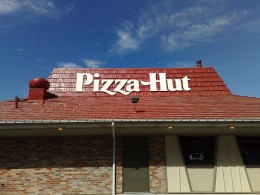The Ritual of the Last Meal

The latest issue of Lapham’s Quarterly is out, and the theme is Death. Hooray! You can read Brent Cunningham’s wildly fascinating essay about the last meals of the soon to be executed online, and I would highly recommend it, if you are into that sort of thing. Or aren’t into that sort of thing at ALL, but still can’t help but be fascinated by the fact that Timothy McVeigh’s last meal was two pints of mint chocolate chip ice cream. This is how it opens:
In January 1985, Pizza Hut aired a commercial in South Carolina that featured a condemned prisoner ordering delivery for his last meal. Two weeks earlier, the state had carried out its first execution in twenty-two years, electrocuting a man named Joseph Carl Shaw. Shaw’s last-meal request had been pizza, although not from Pizza Hut. Complaints came quickly; the spot was pulled, and a company official claimed the ad was never intended to run in South Carolina.
Pizza Hut! Yow. Also this:
In America, where the death rows — like the prisons generally — are largely filled with men from the lower rungs of the socio-economic ladder, last-meal requests are dominated by the country’s mass-market comfort foods: fries, soda, fried chicken, pie. Sprinkled in this mix is a lot of what social scientists call “status foods” — steak, lobster, shrimp — the kinds of foods that in popular culture conjure up the image of affluence. Every once in a while, though, a request harkens back to what, in the Judeo-Christian West, is the original last meal — the Last Supper, when Jesus Christ, foreseeing his death on the cross, dined one final time with his disciples. Jonathan Wayne Nobles, who was executed in Texas in 1998 for stabbing to death two young women, requested the Eucharist sacrament.
Photo: MarkHillary
Support The Billfold
The Billfold continues to exist thanks to support from our readers. Help us continue to do our work by making a monthly pledge on Patreon or a one-time-only contribution through PayPal.
Comments